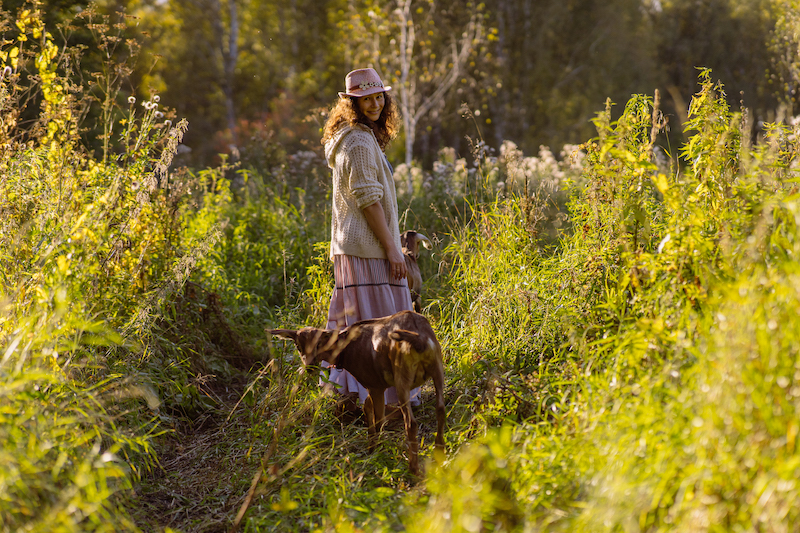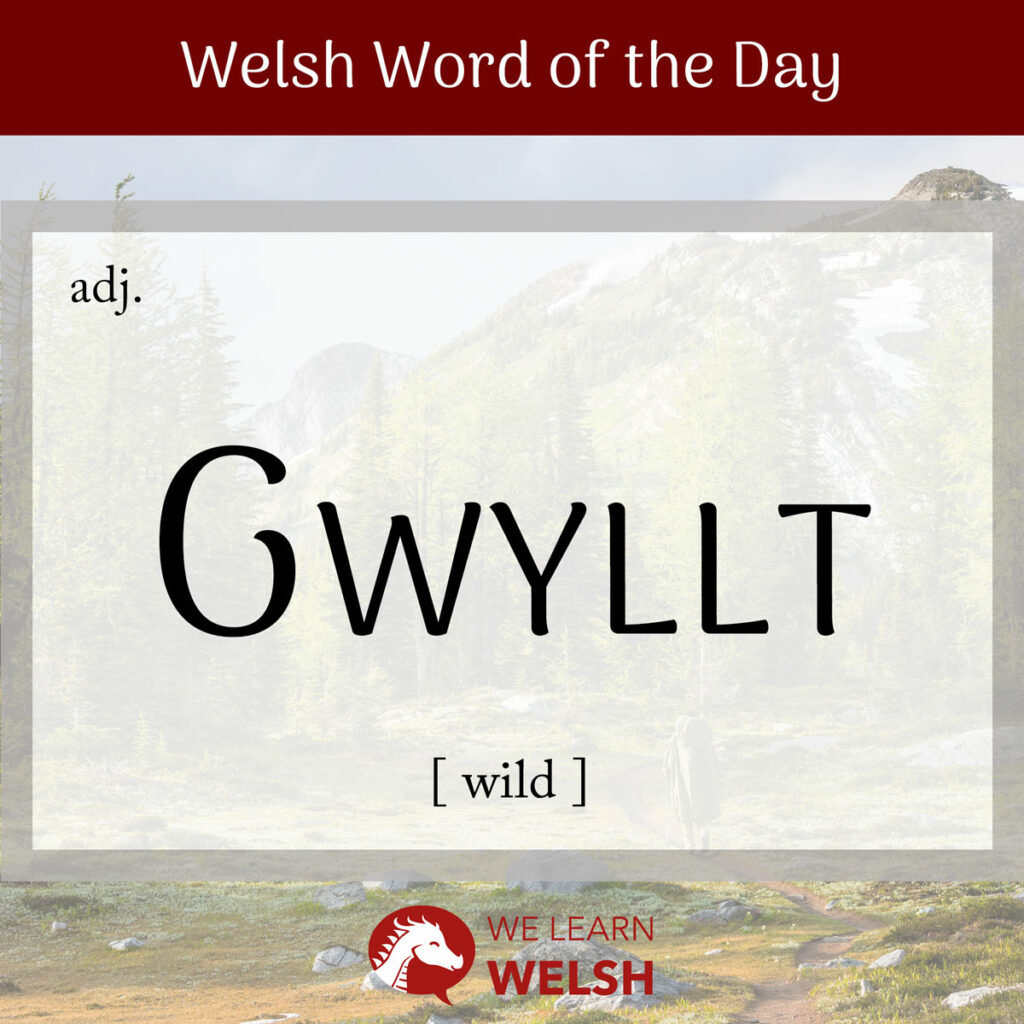Today’s word of the day is the adjective gwyllt. And in my opinion, gwyllt is one of those Welsh words that truly sounds like what it means – which is wild.
gwyllt
wild
There are nuances to this meaning though. Gwyllt can mean a wild landscape, plant, or animal (in the latter case, often as opposed to dof, tame). It can refer to something turbulent or rushing, like a storm (storm) or dŵr (water). Of a person, it can be used similarly to how we’d use mad in English, as a synonym of angry or crazy. We’ll go over examples of this later.
It also often means something you’re struggling to manage – if you have gwallt gwyllt (wild hair), it’s messy no matter how much you brush it! Lastly, gwyllt can be used as a noun, such as in the phrase yn y gwyllt (in the wild).
Gwyllt likely evolved from an old proto-Brittonic word which would have been something along the lines of *uelti or *gweltis. Gwyll is an archaic form, and also, with a separate etymology, a literary word for darkness.
Below is how this adjective mutates.
Soft mutation
wyllt
Nasal mutation
ngwyllt
Aspirate mutation
N/A
You can use gwyllt to describe a masculine or feminine singular noun, though it will mutate to wyllt after the latter. To describe a plural noun, you should technically use gwylltion, but the plural forms of adjectives are starting to sound archaic in colloquial Welsh.
Here are some examples of animals that we might describe as gwyllt.
- gafr wyllt = wild goat / chamois
- cath wyllt = wildcat
- ci gwyllt = wild dog
- elyrch gwyllt(ion) = wild swans
- gwyddau gwyllt(ion) = wild grey geese
- baedd gwyllt = wild boar
- gwenyn gwyllt(ion) = bumblebees
- ebol gwyllt = wild pony
Remember, the tame equivalent of any of these would instead be dof. This mutates to ddof after a feminine animal (like cath or gafr). The term for pet specifically is anifail anwes.
I often wonder whether my cathod anwes (tame cats) ever feel gwyllt hiraeth y pellterau (the call of the wild). The word hiraeth in this last phrase means grief, longing, homesickness, or nostalgia, and it’s often used to refer specifically to nationalist longing for one’s homeland. So, gwyllt hiraeth y pellterau could be translated as a wild longing for far-away lands.
Mae anifeiliaid gwyllt eisiau bod yn rhydd.
Wild animals want to be free.

The noun gwylltineb is derived from gwyllt and means rage or fury, usually applying to a person. There is also a verb, gwylltio, which means to rage or to become angry. To cael y gwyllt (get the wild) is to lose one’s temper, although it’s also normal to literally translate this as colli tymer.
There are more specific, unique phrases for gwyllt as angry, though – like gwyllt ulw and yn gaclwm / gidwm gwyllt (furious). My favourite is yn gacwn gwyllt / yn wyllt gacwn, which literally means wasp-wild!
Like with the English mad, there’s a bit of overlap as to when this means crazy and when it means angry, and you might have to use context to tell what someone means. For example, there is the phrase gwyllt i goed, which means out of one’s senses. It usually means mad but might sometimes be used in a dramatic way to describe someone who is very, very dig / blin (angry).
A phrase which is almost always used in the crazy sense is gwyllt chwibwrn / chwibwrn wyllt. Chwibwrn means dizzy / giddy and sometimes appears as gwibwrn, meaning it mutates to wibwrn in the phrase gwyllt wibwrn.
You can run wild in Welsh too – although literally it means go wild. This is mynd yn wyllt. This is another phrase you need to use context to decipher, as it can refer to to being in a mad hurry. It’s sometimes used with specific verbs, like rhedeg yn wyllt (running wildly fast) or gyrru’n wyllt (driving madly fast).
Sometimes, ar is substituted for yn in these phrases. And someone who is ar frys gwyllt is in a mad rush, like me after I miss the bus to work.
Rwy’n hwyr – bydd fy rheolwr yn gacwn gwyllt!
I’m late – my boss will be mad as wasps!
Like with rushing or raging water being dŵr gwyllt, wildfire is tân gwyllt. However, tân gwyllt is also firework! Probably not two things you want to get mixed up. Bonfire Night in Wales is Noson Tân Gwyllt.
Interestingly, gwyllt has been used historically in Welsh to refer to illnesses. If you use gwyllt to describe an illness, that means it is acute, and probably very painful! It’s usually translated as raging. Here are some examples:
- yr ewinrhew wyllt = frostbite
- dant gwyllt = a raging toothache
- nod gwyllt = bubonic plague
- cosi gwyllt = scabies
- anemia gwyllt = pernicious anaemia
- y bib wyllt = dysentery
- cranc gwyllt = used for many diseases, inc. cancer and gangrene
- dafaden wyllt = cancerous wart
As far as I know, these aren’t particularly common today, as you can probably tell by the diseases they’re referring to. But I’m definitely planning to bring dant gwyllt back into fashion next time I have a bad tooth!

